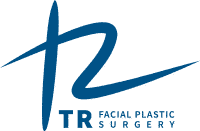Rhinoplasty (nose surgery) is one of the most frequently performed plastic surgery procedures. Dr. Ramachandra performs both functional and cosmetic rhinoplasty. During rhinoplasty, the nose is reshaped, reduced or augmented to improve its appearance and/or function. Rhinoplasty may be performed to correct a birth defect, or repair an injury such as a broken nose. It is also often performed strictly for cosmetic reasons.
For a patient with ongoing sinusitis, rhinoplasty is sometimes performed in conjunction with endoscopic sinus surgery; for a patient with a deviated septum, it is often performed along with septoplasty, a procedure that straightens the septum. In such cases, rhinoplasty effectively treats health and breathing problems, in addition to improving the patient‘s appearance.
Candidates for Rhinoplasty
Candidates for rhinoplasty have finished their facial growth. Girls should typically be at least 15 or 16 years old; boys should be at least 17 or 18. Patients considering rhinoplasty should be in overall good health and not smoke. It is important that candidates have realistic expectations about what rhinoplasty can do. Although undergoing rhinoplasty may boost self-confidence, it should not be viewed as a cure-all for personality or relationship issues, and should not be the result of social pressure.
Goals of Rhinoplasty
During rhinoplasty, the surgeon may attempt to do one or more of the following:
- Remove a hump
- Modify the bridge
- Reshape the tip
- Reshape or resize the nostrils
- Repair an injury
- Open breathing passages
- Increase or decrease size
Rhinoplasty can involve modifying bone, skin or cartilage, or all three.
There are several goals of rhinoplasty. Dr. Ramachandra firmly believes that any maneuver performed during elective nasal surgery should at least maintain if not improve the nasal breathing.
The Rhinoplasty Procedure
Rhinoplasty, which takes from 2 to 3 hours, is usually an outpatient procedure performed under general anesthesia. Two techniques are typically used. In closed rhinoplasty, incisions are made within the nostrils. In open rhinoplasty, an incision is made across the columella, the tissue between the nostrils. With both methods, the soft tissues covering the nose are gently lifted, and the bone and cartilage are sculpted to the desired shape.
If additional cartilage is needed to augment the nose, it is frequently taken from the patient‘s nasal septum. If larger sections of tissue are required, cartilage may be surgically removed from the ear or other parts of the body as well. If the patient has a deviated septum, the septum and inner structures of the nose are adjusted to improve breathing. The tissues are then redraped and stitched closed. If necessary, nostrils are reshaped in the final stage of rhinoplasty.
Recovery from Rhinoplasty
Immediately after surgery, the patient‘s nose and eye area are usually bruised and swollen. External and internal nasal splints remain in place for the first 5 days. During this period, the patient may experience some nasal pain or a dull headache, as well as some bleeding and nasal drainage. Most patients feel like themselves within a few days and are able to return to regular activities in about a week.
To increase comfort, and decrease bleeding and swelling, rhinoplasty patients are advised to follow these post-surgical directives:
- Sleep with head of bed elevated
- Avoid strenuous activities
- Take baths instead of showers
- Avoid blowing the nose
- Avoid becoming constipated
- Avoid exaggerated facial expressions
- Brush the teeth gently
- Avoid pulling clothing over the head
- Use sunscreen that has an SPF of 30 or higher
- Limit dietary sodium
- Do not use ice packs
Although the vast majority of swelling resolves after 2 weeks or so, minimal swelling may be present for as much as a year.
Risks of Rhinoplasty
Complications associated with rhinoplasty are rare and, when they occur, usually minor. Surgical risks in general include infection or adverse reaction to anesthesia. In the case of rhinoplasty, specific risks include the following:
- Recurring nosebleeds
- Difficulty breathing through the nose
- Permanent numbness in or around the nose
- Persistent pain
- Discoloration of skin on the nose
- Scarring
- Perforation of the nasal septum
It is possible that a patient is not satisfied with the results of the rhinoplasty. In such a case, a second surgery, called a revision rhinoplasty, may be performed at a later date.

